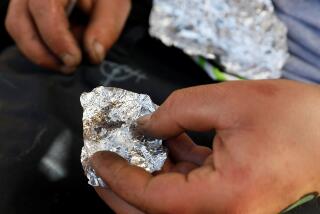How to Be Effective Against Cocaine : RAND study shows power of fighting demand
- Share via
Intuition tells us, and evidence grows, that the national policy on cocaine abuse is badly out of kilter. Federal and local police agencies spend about $12 billion a year in trying to stem supply, but the supply seems endless as long as demand remains high. We spend about $1 billion a year in public and private money on treating users, but skeptics wonder whether this makes a real difference.
Well, it does, and we could do well by diverting much of the money spent on enforcement into treatment of heavy users to cut the demand. That is the burden of a new statistical study from the RAND Corp. It concludes that one dollar spent on treatment results in $7 worth of overall savings to society. By contrast, the study finds, each dollar spent on control--in helping foreign governments cut supply and interdicting and reducing domestic distribution--returns only 99 cents in savings. In other words, the war on cocaine suppliers is getting us almost nowhere.
Statistics on drug control and abuse are notoriously squishy. But the RAND researchers, Susan S. Evering- ham and C. Peter Rydell, have made one of the first attempts at systematically comparing through computer modeling the cost-effectiveness of various approaches to cocaine abuse.
They conclude that the best value for the money involves reallocating about $3 billion, or about a quarter, of the yearly enforcement money to allow for treatment of nearly all of the 1.7 million heavy cocaine users. This, they calculate, would cut annual cocaine consumption by half by the year 2007 and result in a one-third ($10 billion) reduction in annual societal costs.
Such computer simulations have their limitations, but the study suggests a middle ground between those who would legalize cocaine altogether and those who would impose even harsher criminal penalties. While the RAND researchers do not advocate dropping enforcement, their view that treatment is more cost-effective is one that has gained acceptance even among many top police officials and prosecutors. This argument goes only so far, however, because it will never be possible to get all users into treatment. And indeed, RAND agrees that treatment is not a panacea. The real issue is how to get the most value for each dollar spent.
Both sides of the enforcement-versus-treatment equation are imperfect. Drug enforcement spawns police corruption; treatment programs are often money-making shams. But the balance of evidence supports the Clinton Administration’s tentative view that treatment and education must be emphasized. The cocaine epidemic will not end until the demand for the product does.
Imbalance on Cocaine U.S. public and private agencies spent $13 billion combatting cocaine in 1992. Enforcement: 93% Treatment: 7%
More to Read
Sign up for Essential California
The most important California stories and recommendations in your inbox every morning.
You may occasionally receive promotional content from the Los Angeles Times.













